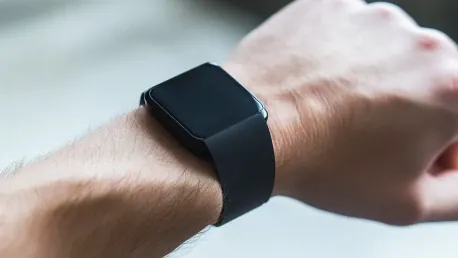The wearable medical devices market is experiencing rapid growth, driven by technological innovations and a rising demand for continuous health monitoring. In an era where chronic diseases are increasingly prevalent and the need for proactive health management is ever-critical, wearable medical devices promise a paradigm shift in the way we monitor and manage our health. With the market’s valuation at USD 69.24 billion in 2023, projections suggest it could reach an impressive USD 324.7 billion by 2032, signaling robust sector expansion and endless possibilities for healthcare.
Emerging Market Landscape
The spectacular growth trajectory of the wearable medical devices market shines a spotlight on the transformative impact these devices have across various healthcare scenarios. Chronic conditions, such as diabetes, cardiovascular diseases, and hypertension, are among the leading factors fueling demands for advanced health monitoring solutions. Health-conscious consumers are progressively leaning towards wearable technology that offers round-the-clock surveillance of vital health metrics, aiding in timely intervention and better management of chronic diseases.
The thrust toward proactive health management is compelling. Consumers now prioritize preventive care over reactive solutions, underscoring the shift in healthcare paradigms. As the market scales new heights, the continuous need for innovation and sophisticated technological solutions cannot be overstated. Wearable medical devices cater to a wide array of health concerns, providing real-time insights into the body’s functioning and transforming patient outcomes.
Technological Advancements
Technological advancements drive the wearable medical devices market, making significant strides in the integration of Artificial Intelligence (AI), the Internet of Things (IoT), and sensor technology. These advancements not only enhance device accuracy and reliability but also bring new dimensions to health monitoring. AI algorithms have the potential to revolutionize healthcare by predicting diseases early, personalizing treatment regimes, and enhancing remote patient monitoring. This framework ensures that patients receive timely medical intervention, improving chances of recovery and reducing complications.
Furthermore, the advent of 5G technology is set to redefine telemedicine applications by ensuring seamless real-time data transmission. This capability enables healthcare providers to monitor patient data uninterruptedly, thereby offering more precise and informed medical advice remotely. As a result, patients, regardless of their geographic location, can access quality healthcare services from the comfort of their homes. This democratization of healthcare could be a game-changer, particularly in underserviced rural or remote areas.
Consumer Trends and Preferences
Given the increasing consumer focus on preventive healthcare, wearable medical devices have become integral to personal health management strategies. These devices empower users by providing continuous health monitoring, enabling them to stay ahead of potential health issues. This proactive approach to health management is critical in reducing hospital visits and ensuring better health outcomes. The user-friendly and cost-effective nature of these devices makes them particularly appealing, especially in developing nations where healthcare accessibility is often limited.
The global shift towards digital health is visible in the rise of consumer awareness about the benefits of wearable medical devices. With healthcare systems increasingly promoting preventive care, more individuals are adopting these advanced health-tracking tools. As consumers become savvier about their health, the demand for intuitive and integrated solutions that offer precise health insights is likely to surge. This heightened consumer demand is a robust pillar supporting the market’s growth trajectory.
Market Challenges
Despite the promising growth, the wearable medical devices market is not without challenges. One of the significant barriers to widespread adoption is the high cost of these devices. While technological advancements have made remarkable strides, reducing costs remains a crucial challenge that manufacturers and innovators need to address. Additionally, data privacy concerns pose substantial challenges. As these devices collect and transmit sensitive health data, ensuring robust data security and maintaining user compliance are paramount.
Moreover, issues related to data accuracy, the compliance of users, and the integration of wearable technology with existing healthcare infrastructure further complicate the market’s expansion. The healthcare landscape is complex, with numerous systems and protocols that new technologies must seamlessly integrate. For wearable devices to reach their full potential, both the healthcare ecosystem and technology providers must work collaboratively to address these underlying issues. This synergy will be pivotal in overcoming market barriers and realizing the expansive growth potential.
Regulatory and Economic Factors
Government initiatives supporting digital health and favorable reimbursement policies play transformative roles in the adoption of wearable medical devices. These measures significantly benefit aging populations and health-conscious individuals, fostering widespread adoption of advanced health monitoring solutions. Initiatives aimed at lifting entry barriers and encouraging innovation are vital in propelling this market forward. The support for technological advancements from regulatory bodies will be crucial in providing accessibility to these sophisticated devices.
However, navigating the economic and regulatory landscapes presents challenges. Stringent regulatory requirements and high device costs create hurdles for new entrants, potentially stifling innovation and competition. For incumbents and new companies alike, addressing these regulatory and economic challenges is essential to harness the full potential of this market. Striking a balance between ensuring rigorous safety standards and promoting innovation will play a decisive role in the industry’s progression.
Strategic Developments
Recent industry developments reflect significant strategic moves by key players in the wearable medical devices market. In September 2024, Apple Inc. launched the Apple Watch Series 10, an advanced device equipped with innovative health monitoring capabilities such as sleep apnea notifications. This strategic addition underscores Apple’s commitment to leading the digital health space. Similarly, Omron Healthcare Co. Ltd. acquired Luscii Healthtech in April 2024, aiming to enhance its offerings in remote patient management. Such acquisitions and product innovations are crucial as they shape the future landscape of health monitoring.
Strategic alliances and acquisitions are propelling the market’s expansion and evolution. Companies are continually seeking to bolster their product portfolios and enhance their technological capabilities, positioning themselves competitively in an intensely dynamic market. These strategic endeavors do more than just expand market presence. They also pave the way for bringing cutting-edge solutions to consumers, significantly influencing the trajectory of health technology.
Key Industry Players
The wearable medical devices market is dominated by several major players who are at the forefront of innovation and market expansion. Apple Inc., Abbott Laboratories, Fitbit Inc., Dexcom Inc., and Omron Healthcare Co. Ltd. are leading this technological shift, contributing significantly to the market’s growth and direction. These companies are pushing the boundaries of what is possible with wearable technology, raising the bar for innovation in health monitoring.
Other essential players include Medtronic plc, Garmin Ltd., GE Healthcare, Masimo Corporation, and Koninklijke Philips N.V. The collective contributions of these entities are critical in advancing the precision, accessibility, and popularity of wearable medical devices. Their relentless focus on research and development, consumer engagement, and strategic expansion positions them as central figures in the story of this market’s evolution.
Diverse Market Segments
Wearable medical devices serve a wide range of applications, segmented into various categories including diagnostic and monitoring devices, therapeutic devices, consumer-grade, and clinical-grade solutions. Each segment caters to different aspects of health monitoring and treatment, addressing specific market needs. From monitoring chronic conditions to facilitating home healthcare and fitness tracking, the diversified applications of these devices illustrate their broad utility and appeal.
Distribution channels like retail pharmacies, online platforms, and hypermarkets play a crucial role in making these devices accessible to consumers. These channels ensure that a wide range of products is available to meet diverse consumer needs, facilitating broader market penetration. The seamless supply chain and efficient distribution strategies are pivotal in bridging the gap between manufacturers and end-users, ensuring that advanced health monitoring devices are within reach for all.
Remote Monitoring and Telehealth
The wearable medical devices market is rapidly expanding, fueled by continuous technological advancements and an increasing need for uninterrupted health monitoring. In today’s world, where chronic diseases are more common, the necessity for proactive health management has never been more critical. Wearable medical devices offer a transformative approach to how we oversee our health, providing constant monitoring and valuable data.
In 2023, the market’s valuation stands at USD 69.24 billion, demonstrating the significant impact these devices have already made in the healthcare sector. Projections indicate that by 2032, the market could soar to an astounding USD 324.7 billion. This surge highlights not just robust growth but also the vast opportunities available in the healthcare domain, driven by the adoption of wearable technology.
These devices range from smartwatches that track heart rates and sleep patterns to more sophisticated apparatuses that monitor chronic conditions like diabetes. The potential to improve patient outcomes and reduce healthcare costs is substantial, making wearable medical devices an integral part of modern health strategy. As the market grows, so does the promise of better healthcare accessibility, real-time health data analysis, and a more personalized approach to treatment and prevention.









